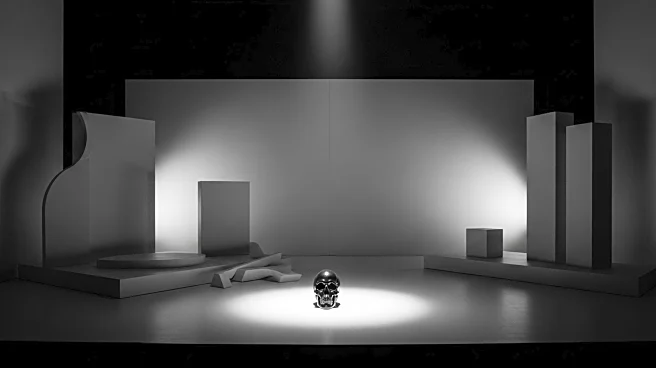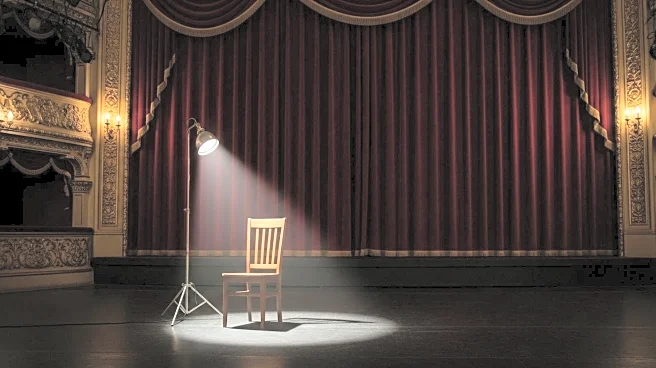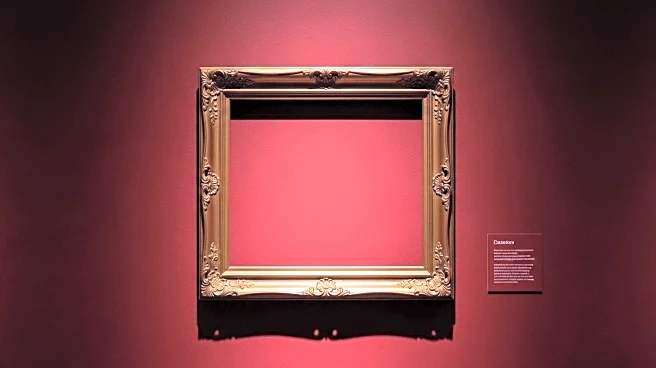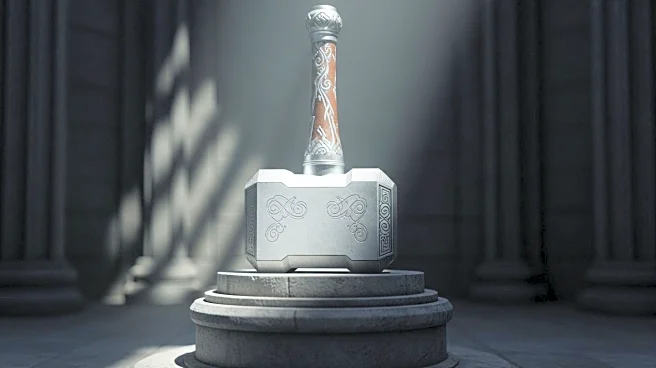What's Happening?
A newly discovered portrait miniature by Nicholas Hilliard, a renowned Elizabethan artist, has been identified as potentially depicting Henry Wriothesley, the 3rd Earl of Southampton. This discovery is significant due to Southampton's known patronage of William Shakespeare and the possibility that he was the 'fair youth' referenced in Shakespeare's sonnets. The portrait, which features an androgynous young man with long ringlets and pearl bracelets, was found with a defaced red heart on its reverse, suggesting a love scorned. Historians Dr. Elizabeth Goldring and Emma Rutherford have published their findings, which may reignite debates about the nature of Shakespeare's relationship with Southampton.
Why It's Important?
The discovery of this portrait could provide new insights into the personal relationships and inspirations behind Shakespeare's work, particularly his sonnets. If Southampton was indeed the 'fair youth,' it could deepen understanding of the historical and cultural context of Shakespeare's writings. This revelation may also influence interpretations of Elizabethan art and literature, highlighting the era's complex social dynamics and the role of patronage in artistic creation. The portrait's androgynous depiction challenges traditional gender norms of the period, offering a glimpse into the nuanced identities and expressions of the time.
What's Next?
The publication of this research in the Times Literary Supplement is likely to spark further scholarly debate and investigation into the connections between Shakespeare and Southampton. Art historians and literary scholars may explore additional archival materials or related artworks to corroborate the findings. The portrait's owners, who have familial ties to Southampton, may consider public exhibitions or further studies to enhance understanding of its historical significance. This discovery could lead to renewed interest in Elizabethan art and the personal histories of its subjects.
Beyond the Headlines
The portrait's depiction of Southampton with long hair and pearl bracelets, typically seen in women's portraits, suggests early expressions of homoerotic imagery in English art. This challenges contemporary perceptions of gender and sexuality during the Elizabethan era, offering a broader cultural perspective on identity and artistic representation. The defacement of the portrait's reverse, with a red heart painted over by a black spear, adds a layer of mystery and intrigue, potentially symbolizing personal or political conflicts of the time.











